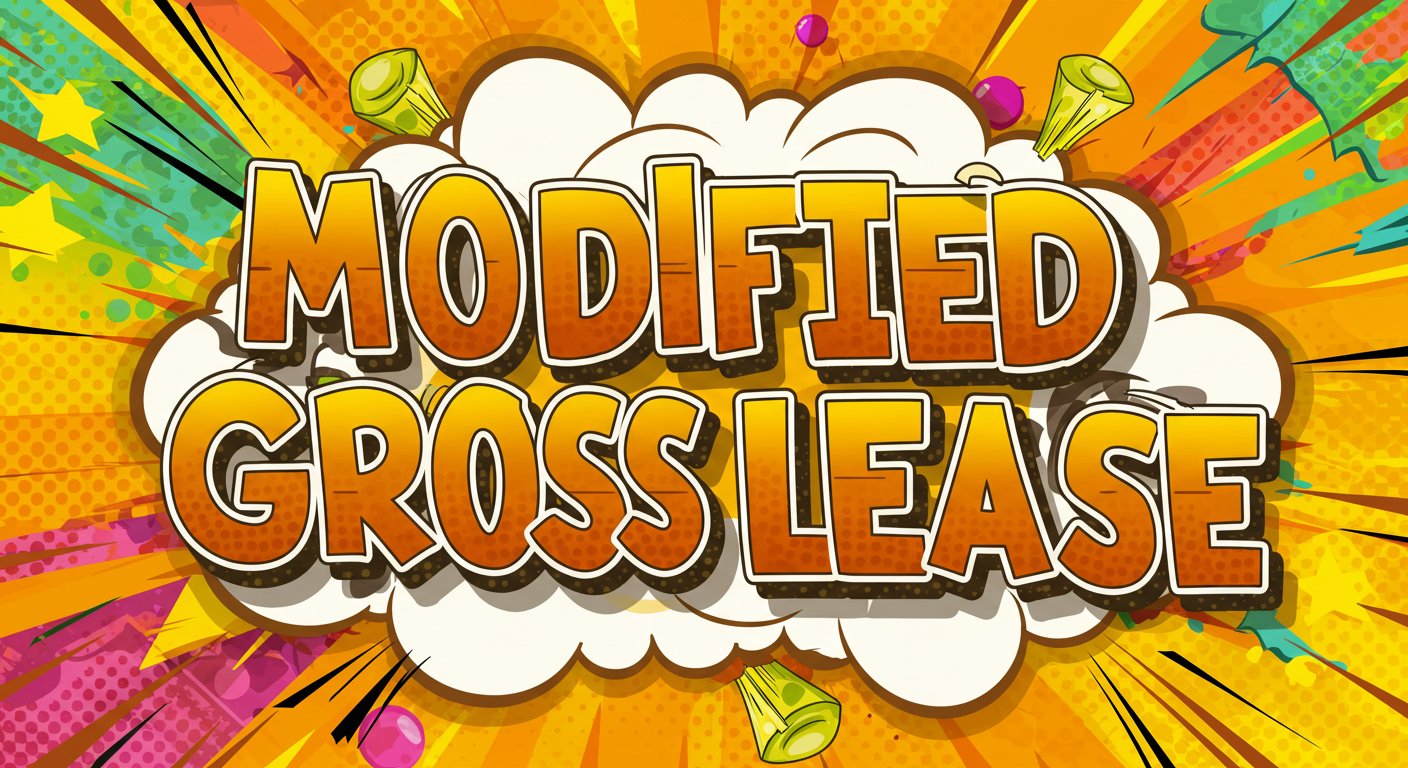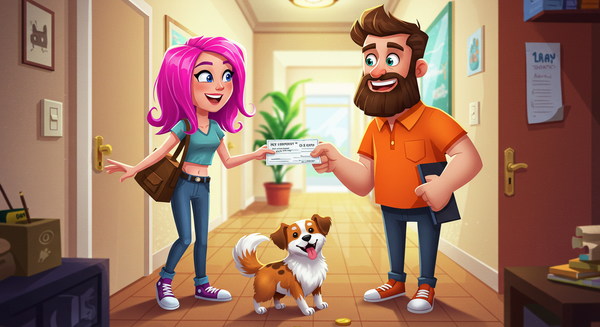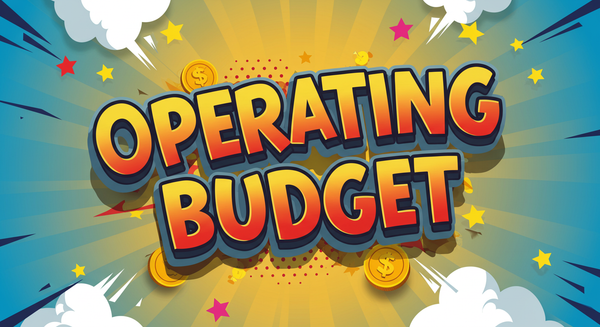Percentage Rent: The Complete Landlord & Tenant Guide
Percentage rent is a commercial lease structure where the tenant pays a fixed base rent plus a percentage of gross sales once revenue rises above a set breakpoint

Imagine It’s Black‑Friday Morning …
Your coffee‑kiosk line snakes past the escalators, POS receipts pile up, and shoppers clutch caramel‑lattes like trophies. Great news for you—and for the landlord who shares a slice of those booming sales. That win‑win snapshot is called percentage rent. In the guide below, you’ll discover exactly how it works, why 60 % of U.S. malls rely on it, and whether the model fits your next lease.
What Is Percentage Rent?
Percentage rent is a commercial lease structure where the tenant pays a fixed base rent plus a percentage of gross sales once revenue rises above a set breakpoint. The breakpoint can be either:
- Natural breakpoint – calculated by dividing annual base rent by the percentage rate.
- Artificial breakpoint – a negotiated dollar amount suited to the business plan.
Formula Total Rent = Base Rent + (Percentage Rate × Gross Sales over Breakpoint)Key Components
| Term | Typical Range | Why It Matters |
|---|---|---|
| Base Rent | Often 10‑20 % below comparable fixed leases | Gives landlords minimum income while lowering tenants’ fixed burden |
| Percentage Rate | 5–10 % general retail; 5–8 % restaurants | Aligns rent cost with sales health |
| Breakpoint | $500 k – $2 M typical shopping‑center thresholds | Triggers the variable portion |
Why Do Landlords & Tenants Like It?
- Upside sharing. Some centers report percentage rent accounting for 30 % of total rental income in high‑performing locations.
- Tenant relief during slow periods. Base rent stays affordable if sales dip.
- Property value boost. Well‑run retail centers see property‑value lifts of 25 % or more thanks to sales‑tied growth.
Industry adoption: 60 % of U.S. malls and 65‑70 % of open‑air centers include percentage rent clauses.
Base Rent vs. Percentage Rent
A quick side‑by‑side:
| Fixed‑Only Lease | Percentage‑Rent Lease | |
|---|---|---|
| Monthly payment | Flat $X | Base rent + variable slice |
| Landlord upside | Capped | Expands with sales |
| Tenant risk | Higher in downturns | Lower fixed burden |
Mini‑Calculator → Annual Base Rent ÷ Percentage Rate = Natural Breakpoint. (Try $50 000 ÷ 5 % = $1 000 000.)
Breakpoints & Rate Math
Here's how the breakpoints and rate math work, along with a real-world example.
- Find the breakpoint (natural or artificial).
- Track monthly gross sales.
- Apply the percentage rate to sales above the breakpoint.
Example
Base Rent = $4 000/month ( $48 000/yr )
Rate = 6 %
Natural Breakpoint = 48 000 ÷ 0.06 = $800 000
Annual Sales = $950 000
Percentage Rent = 0.06 × ($950 000 – $800 000) = $9 000
Total Annual Rent = $48 000 + $9 000 = $57 000
Seasonal Nuance
Retailers with heavy Q4 peaks often negotiate higher artificial breakpoints to smooth cash flow, while ski‑resort tenants may prefer lower winter thresholds.
Net, Gross, or Percentage—Which Lease Fits?
| Feature | Net Lease | Gross Lease | Percentage Lease |
|---|---|---|---|
| Fixed base | ✓ | ✓ | ✓ (lower) |
| Variable component | CAM & taxes | None | % of sales |
| Best for | Passive investors | Simple office | Retail with strong sales linkage |

Terms & Clauses That Matter
A standard clause might read:
“Tenant shall pay Landlord, as additional rent, an amount equal to six percent (6 %) of Gross Sales in excess of the Breakpoint, due within ten (10) days of each calendar month‑end.”
Can you owe additional rent after lease expiry? Yes—many leases require a final percentage‑rent reconciliation covering the stub period between the last sales report and lease termination.
Audit & Compliance
- Record retention: Tenants must keep detailed sales records for at least three years.
- Late reporting: Studies show 15‑20 % of tenants miss monthly deadlines.
- Under‑reporting risk: Audits uncover 3‑5 % average discrepancies, with some topping $600 k uncollected rent.
Tax & Legal Lens
- REIT Friendly: Section 856(d)(2)(A) of the Internal Revenue Code classifies percentage rent as acceptable rental income—so long as it’s based on sales, not profits.
- Deductible Expense: Tenants can deduct both base and percentage rent as operating costs.
- State freedom: 36 states block rent‑control ordinances that might otherwise cap commercial rents.
Percentage Rent – Frequently Asked Questions
What is percentage rent in commercial real estate?
It’s a lease model where the tenant pays a lower fixed base rent plus a percentage of gross sales above an agreed breakpoint, letting rent rise and fall with store performance.
Why are retail landlords and tenants in favor of a percentage lease?
Landlords share upside when sales spike, while tenants enjoy reduced fixed overhead during slower periods—creating a win‑win alignment of incentives.
Is a percentage lease right for my business?
If your sales fluctuate seasonally or you’re launching a concept and want lower fixed costs, a percentage lease can soften early‑stage cash‑flow risk. Established tenants with predictable revenue may prefer standard fixed rent.
How does percentage rent work in a retail lease?
You report gross sales monthly. Once cumulative sales for the lease year pass the breakpoint, you pay the agreed percentage rate (e.g., 6 %) on the excess. Any owed amount is typically paid monthly with a year‑end true‑up.
When is percentage rent used?
Mostly in retail settings—shopping centers, outlet malls, airports, entertainment districts—but it’s also common in restaurants, movie theaters, and some hospitality venues.
How does the breakpoint influence a percentage lease?
The breakpoint is the revenue threshold that triggers the variable rent. A lower breakpoint means you’ll pay percentage rent sooner; a higher breakpoint delays it.
Why does percentage rent or minimum rent matter?
Minimum (base) rent guarantees landlords a predictable income floor, while the percentage component rewards performance. Balancing the two protects both parties’ interests.
How do you calculate percentage rent with a natural breakpoint?
Divide the annual base rent by the percentage rate. Example: $48 000 base ÷ 6 % = $800 000 breakpoint.
How do you calculate percentage rent with an artificial breakpoint?
Tenant and landlord negotiate a sales threshold that suits the business model—often tied to pro‑forma forecasts or seasonal expectations.
How do seasonal sales affect percentage rent?
Holiday spikes can push sales past the breakpoint quickly. Many tenants negotiate timing or reporting accommodations so cash‑flow shocks don’t hit all at once.
What is percent change and how do you calculate it?
Subtract prior‑period sales from current‑period sales, divide by prior‑period sales, then multiply by 100 to get the percentage increase or decrease.
What are the common terms of a percentage lease?
Key pieces: base rent, percentage rate, breakpoint, definition of gross sales, audit rights, record‑retention period, and reporting schedule.
What is an example of a percentage rent clause?
"Tenant shall pay Landlord six percent (6 %) of Gross Sales in excess of $800 000 for each lease year, payable with the monthly statement and reconciled annually." Always tailor language to your deal.
Can you owe additional rent after your lease expires?
Yes. Most leases call for a final reconciliation covering sales accrued up to the vacate date. Any percentage rent still due becomes payable even after the term ends.
How are percentage rents reported and audited?
Tenants submit monthly (or quarterly) sales statements. Landlords usually reserve the right to audit records once per year, at their expense, to verify accuracy.
What happens if sales reports are late or inaccurate?
Late reports can trigger late fees; inaccuracies found in an audit may result in back rent plus interest and audit costs.
What sales are excluded from “gross”?
Typically: sales tax, returns, employee discounts, gift‑card redemptions, and inter‑store transfers. Online sales may be excluded or prorated—read your lease.
What are the tax implications of a percentage lease?
Tenants deduct percentage rent as an operating expense; landlords treat it as rental income. Both must follow normal GAAP and IRS rules for timing and documentation.
How is percentage rent reported for tax purposes?
Landlords include it in Schedule E rental income; tenants record it in the rent line of their income statement. Consult your accountant for state‑specific nuances.
What are the legal considerations of a percentage lease?
Key issues: defining gross sales, audit rights, breakpoint adjustments, force‑majeure relief, and compliance with REIT rules if the landlord is a REIT.
Percentage lease vs. net lease—what’s the difference?
Net leases pass property expenses (taxes, insurance, CAM) to tenants; percentage leases tie part of rent to sales. Some hybrid "percentage‑net" structures exist.
What is pari passu in commercial real estate?
Latin for “on equal footing.” In leases it describes payment obligations that rank equally—used when percentage and base rent are proportionally adjusted.
How can I see percentage rent in Forbury?
Forbury’s valuation software models percentage rent under “Retail Income Streams” → “Turnover Rent.” Enter breakpoint and rate to forecast variable income.
Do you have questions stemming from existing leases?
Pull your lease’s percentage‑rent clause, breakpoint schedule, and audit language. Then consult legal counsel or our lease‑review team for bespoke advice.
What is a breakpoint?
The sales threshold that triggers percentage rent. Below it, only base rent is due; above it, the percentage rate applies to the excess.
How is the percentage rate chosen by industry?
Rates vary by sector: apparel 5‑7 %, food‑and‑beverage 5‑8 %, jewelry 7‑10 %. Benchmarks come from industry comps and landlord underwriting.
How do online or omnichannel sales count?
Leases increasingly include a proration formula—crediting in‑store pickups or local‑delivery ZIP codes—to ensure brick‑and‑mortar performance isn’t masked by e‑commerce.
Can percentage rent hurt profitability?
Only if the breakpoint or rate is set unrealistically low. Model scenarios before signing, and negotiate caps or graduated rates if needed.
Are percentage leases common outside retail?
Yes—restaurants, gyms, co‑working spaces, cinemas, and some medical clinics use them when revenue correlates strongly with location footfall.
Legal Disclaimer: The information contained in this article and its accompanying FAQ is provided for general informational purposes only and does not constitute legal, tax, or financial advice. Commercial real‑estate laws and regulations vary by jurisdiction, and the applicability of percentage‑rent concepts may depend on specific facts and circumstances. Readers should consult qualified legal counsel, tax professionals, or other licensed advisors regarding their individual situations before acting on any information herein. LandlordDoc and the authors disclaim all liability for actions taken or not taken based on the contents of this publication.






